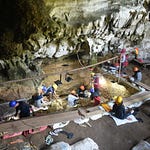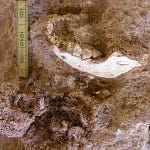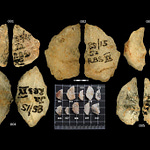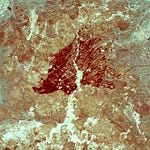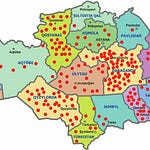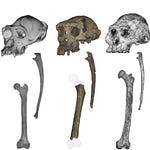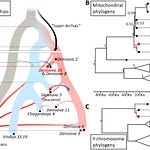In a quiet arroyo near Sauce, Uruguay, a calcaneus, the heel bone, of a long-extinct giant ground sloth (Lestodon armatus) sat buried among more than two thousand other fossilized megafaunal remains. But this bone was different. It carried a circular puncture, deep and clean, driven into dense cortical tissue. The evidence, recently published in the Swiss Journal of Palaeontology1, is forcing archaeologists to revisit the timeline of when humans first hunted in South America.
"The shape and depth of the indentation indicate a rotating, penetrating object with a rounded tip—possibly wood, bone, or ivory—was driven into the bone with force," the study’s authors reported.
The injury doesn’t resemble carnivore tooth marks or trampling damage. Nor does it fit patterns known from intraspecific sloth combat. It is more consistent with a close-range thrust from a hafted weapon, perhaps something like a club or spear tipped with bone or hardened wood.
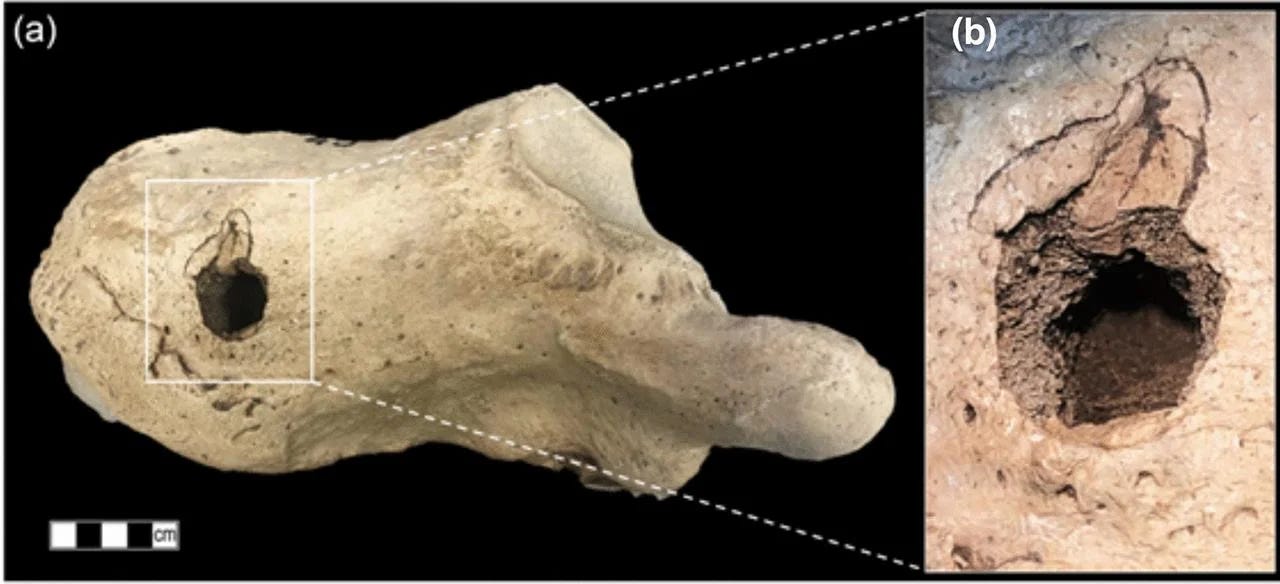
The Sloth and the Story in Its Foot
The site, Arroyo del Vizcaíno, is no stranger to paleontological attention. Since excavations began in the late 1990s, it has yielded the remains of over 15 megafaunal species. Radiocarbon dating places the deposits at around 33,000 years before present. That alone is significant, predating the Last Glacial Maximum by thousands of years and pushing well beyond the currently accepted timeline of human migration into South America.
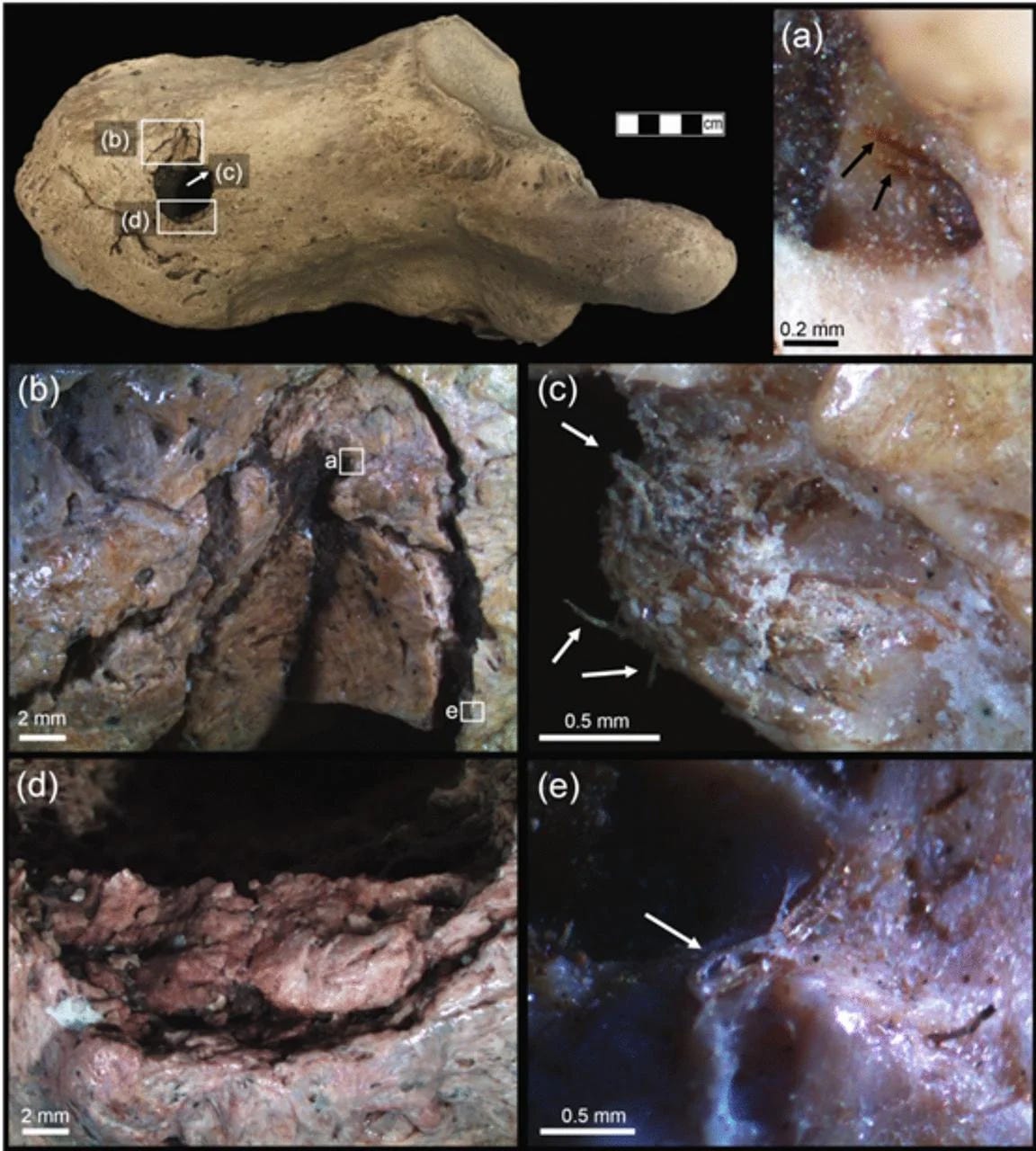
But the heel bone, designated CAV 45, has become the focus for a different reason. The puncture is just over 21 millimeters wide and nearly 41 millimeters deep, with internal striations that curve around its tapered base. These wear patterns suggest the weapon twisted and shifted after impact. There are also plant residues, wood fibers and lignified tissues, lodged deep within the cavity, suggesting a wooden element was involved.
Interpreting the Lesion: Accident, Predator, or Hunter?
The researchers ruled out natural damage through a process of elimination. Large predators like Smilodon populator, the saber-toothed cat, would leave elliptical punctures matching their curved canines, and likely in pairs. The sloth’s own teeth are not strong enough to penetrate bone this deeply. Accidental trauma from rocks or trampling would likely produce irregular fractures and inconsistent geometry.
"A spear thrown from a distance can’t account for the energy required to produce this lesion," the authors argue. "Instead, a close-range thrust with a heavy implement better fits the mechanics and angle of entry."
Their calculations estimate over 120 joules of energy were needed to fracture the dense heel bone. That’s not something easily accomplished by accident.
Implications for the Peopling of the Americas
If confirmed, this injury could represent the earliest direct evidence of human-megafauna interaction in South America, some 10,000 years before the Clovis horizon and nearly as early as the controversial footprints at White Sands, New Mexico.
The timing matters. The presence of a hunting lesion at 33,000 years ago supports a growing body of research suggesting that humans were present in the Americas far earlier than once believed.
This isn’t the first line of evidence from Arroyo del Vizcaíno. At least 40 other bones from the site bear cut marks likely made by stone tools. Still, most archaeologists are cautious. Extraordinary claims require extraordinary evidence, and in this case, one punctured sloth heel will not rewrite history on its own. But it does nudge the debate forward.
What a Heel Can Teach
The implications stretch beyond questions of migration. They speak to behavior, technology, and intention. Whoever injured this sloth was skilled enough to manufacture a weapon, approach a dangerous animal, and strike with enough precision and force to penetrate a weight-bearing bone. This suggests not just presence, but adaptation and ecological knowledge.
"Whether for disabling prey or as a desperate act during a close encounter, the injury on CAV 45 represents a human moment imprinted on ancient bone," one researcher noted.
For now, CAV 45 stands as one more voice in the growing chorus of fossil evidence that early South Americans were far more widespread, more resourceful, and perhaps arrived much earlier than the textbooks still say.
Related Research
Boëda, E. et al. (2021). 24.0 kyr cal BP stone artefact from Vale da Pedra Furada, Brazil. PLoS ONE, 16(3), e0247965. https://doi.org/10.1371/journal.pone.0247965
Bennett, M. R. et al. (2021). Evidence of humans in North America during the Last Glacial Maximum. Science, 373, 1528–1531. https://doi.org/10.1126/science.abg7586
Bustos, D. et al. (2018). Footprints preserve terminal Pleistocene hunt? Science Advances, 4(4), eaar7621. https://doi.org/10.1126/sciadv.aar7621
Politis, G. G. et al. (2019). Campo Laborde: Giant sloth kill site in Argentina. Science Advances, 5(3), eaau4546. https://doi.org/10.1126/sciadv.aau4546
Mothé, D. et al. (2020). Embedded artifact in extinct proboscidean. Quaternary Science Reviews, 229, 106125. https://doi.org/10.1016/j.quascirev.2019.106125
Fariña, R. A., Hayes, E., Lemoine, L. A., Fullagar, R., Tambusso, P. S., & Varela, L. (2025). An indentation in a 33,000-year-old right calcaneus of the ground sloth Lestodon (Xenarthra, Folivora) from Uruguay and its possible human agency. Swiss Journal of Palaeontology, 144(1). https://doi.org/10.1186/s13358-025-00379-0


